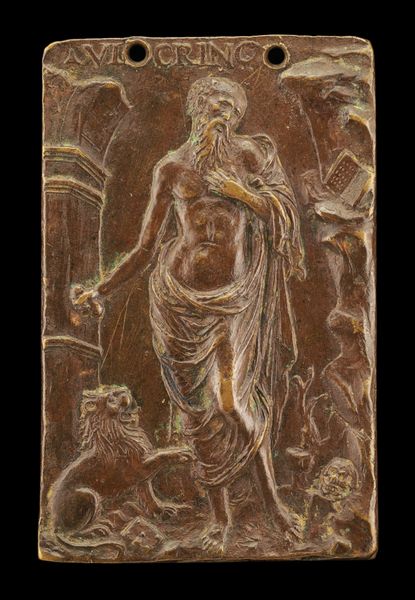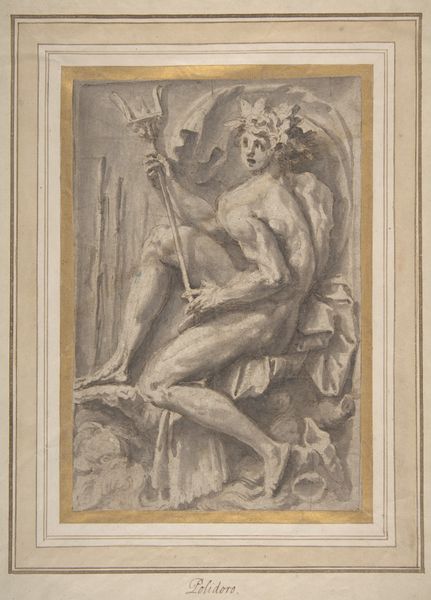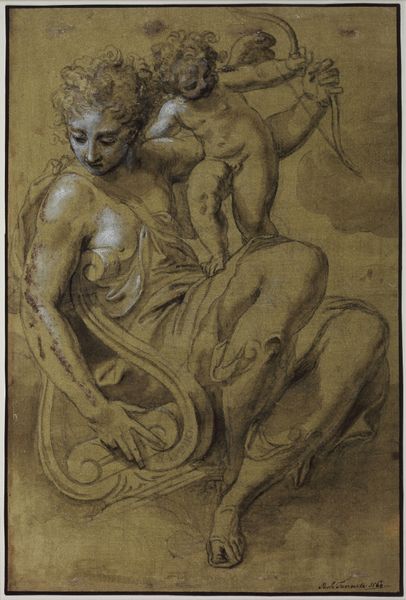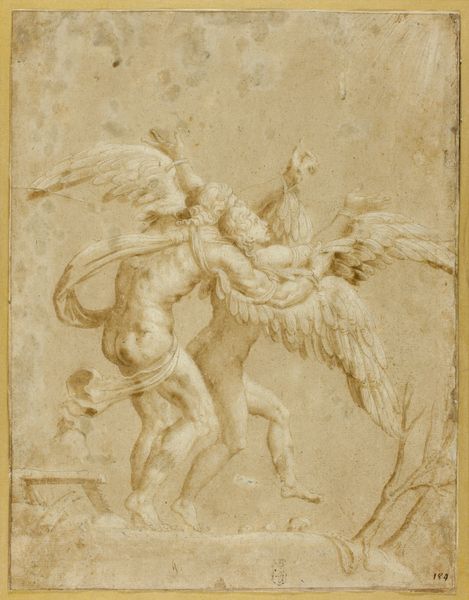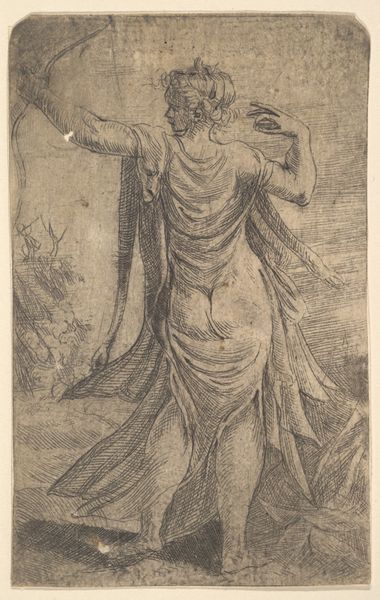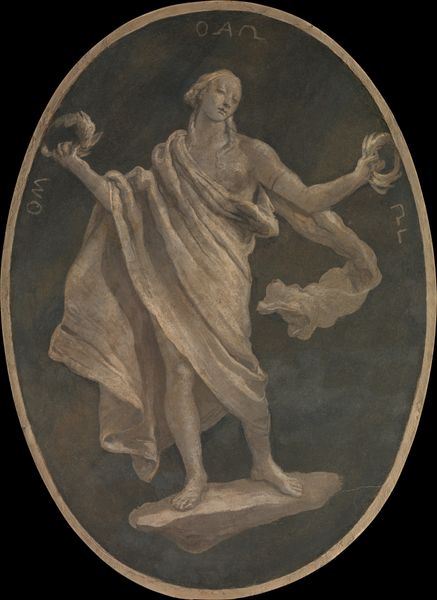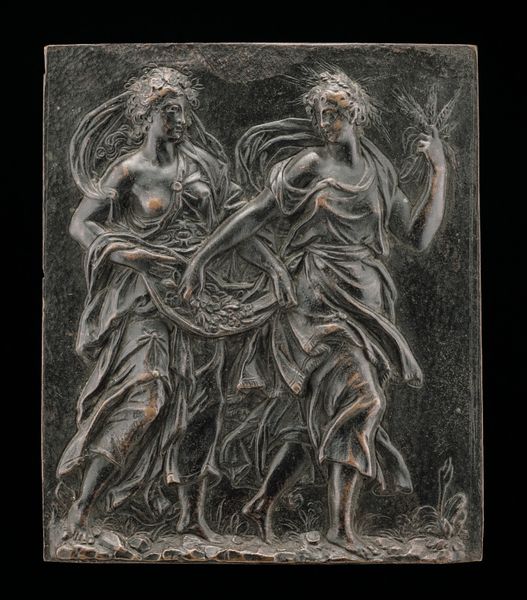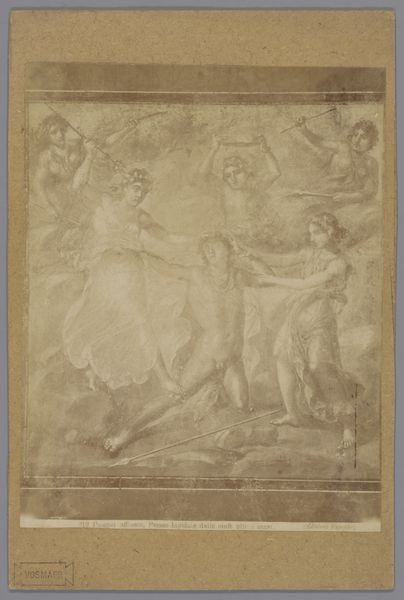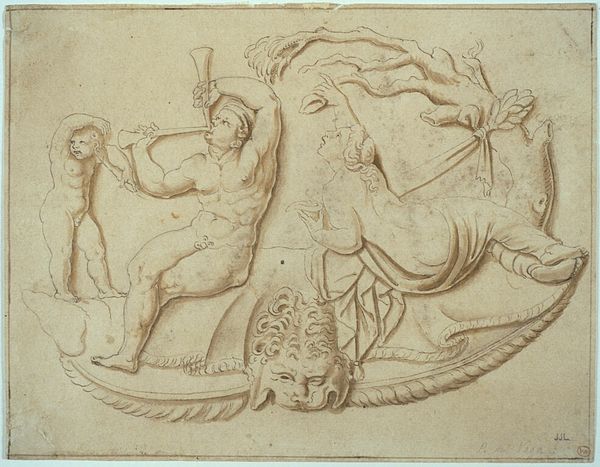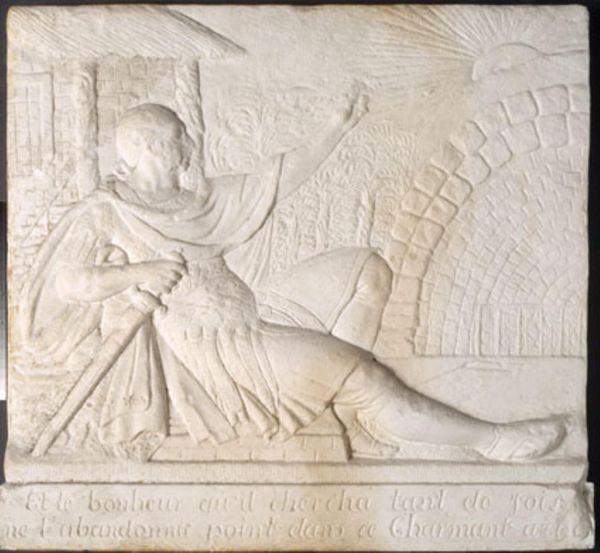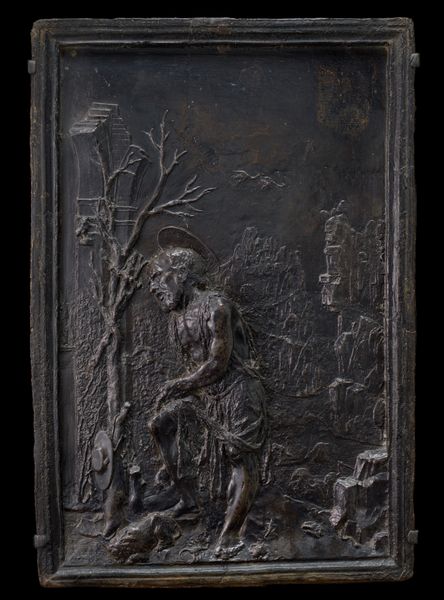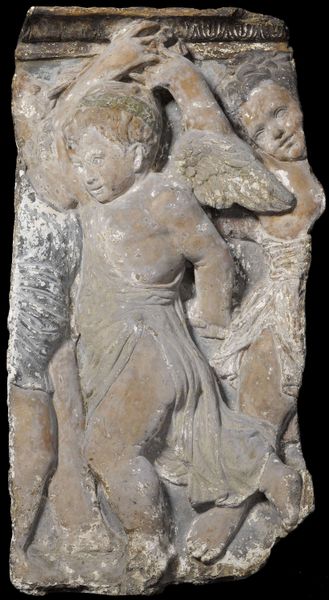
Allegorical Figure Representing America 1747 - 1804
0:00
0:00
relief, sculpture, plaster
#
neoclacissism
#
allegory
#
greek-and-roman-art
#
relief
#
figuration
#
female-nude
#
sculpture
#
plaster
#
history-painting
#
nude
#
male-nude
Dimensions: 32 1/4 x 42 3/4 in. (81.9 x 108.6 cm)
Copyright: Public Domain
Curator: This plaster relief is attributed to Giovanni Domenico Tiepolo and is entitled "Allegorical Figure Representing America". Created between 1747 and 1804, it currently resides at The Metropolitan Museum of Art. My initial response to this piece is its somberness. Despite its classical allegorical form, the monochromatic plaster lends it a subdued and rather melancholic mood. Editor: Indeed. The restrained palette certainly affects how one perceives this allegorical representation of America. It adheres to Neoclassical principles, visible in the idealized, almost academic rendering of the human form and the overall composition's clarity. We can examine it further through the lens of semiotics, specifically how Tiepolo uses classical visual language to construct an image of a newly imagined territory. Curator: But that language is doing significant work here. Consider how this representation participates in—and, perhaps, complicates—the narrative of colonization. The figure, nude except for a headdress and minimal adornments, sits upon what seems to be an alligator. Editor: That animal immediately places us in the "New World," associating it with perceived dangers and exoticism. And you're correct about her partial nudity and adornments—they construct her as a figure vulnerable yet simultaneously majestic. The artist evokes a complicated negotiation between indigenous identity and European idealization. Curator: Absolutely. The allegorical figure grasps what appears to be a primitive spear in one hand and bundles of wheat in the other. The implements denote both resourcefulness and agricultural abundance, almost advertising America’s economic potential to European colonizers. Editor: Note too, however, how those “primitive” weapons are placed within the same hand as an almost regal scepter, drawing attention to inherent contradictions: violence vs. abundance. Moreover, let’s interrogate the very act of allegorical representation during a period of intense colonial expansion. Is this about endowing "America" with dignity or about something far more problematic? Curator: Your point on the tensions inherent in allegory rings true. The choice of plaster—itself a malleable material capable of both imitation and reinvention—reinforces the idea that this “America” is being actively constructed. We, therefore, read "Allegorical Figure Representing America" as an ideological artifact more than an innocent artwork. Editor: Agreed. When looking closely, it seems that this artwork embodies a profound and continuing negotiation about identity, representation, and power—echoing across time into our present moment.
Comments
No comments
Be the first to comment and join the conversation on the ultimate creative platform.
